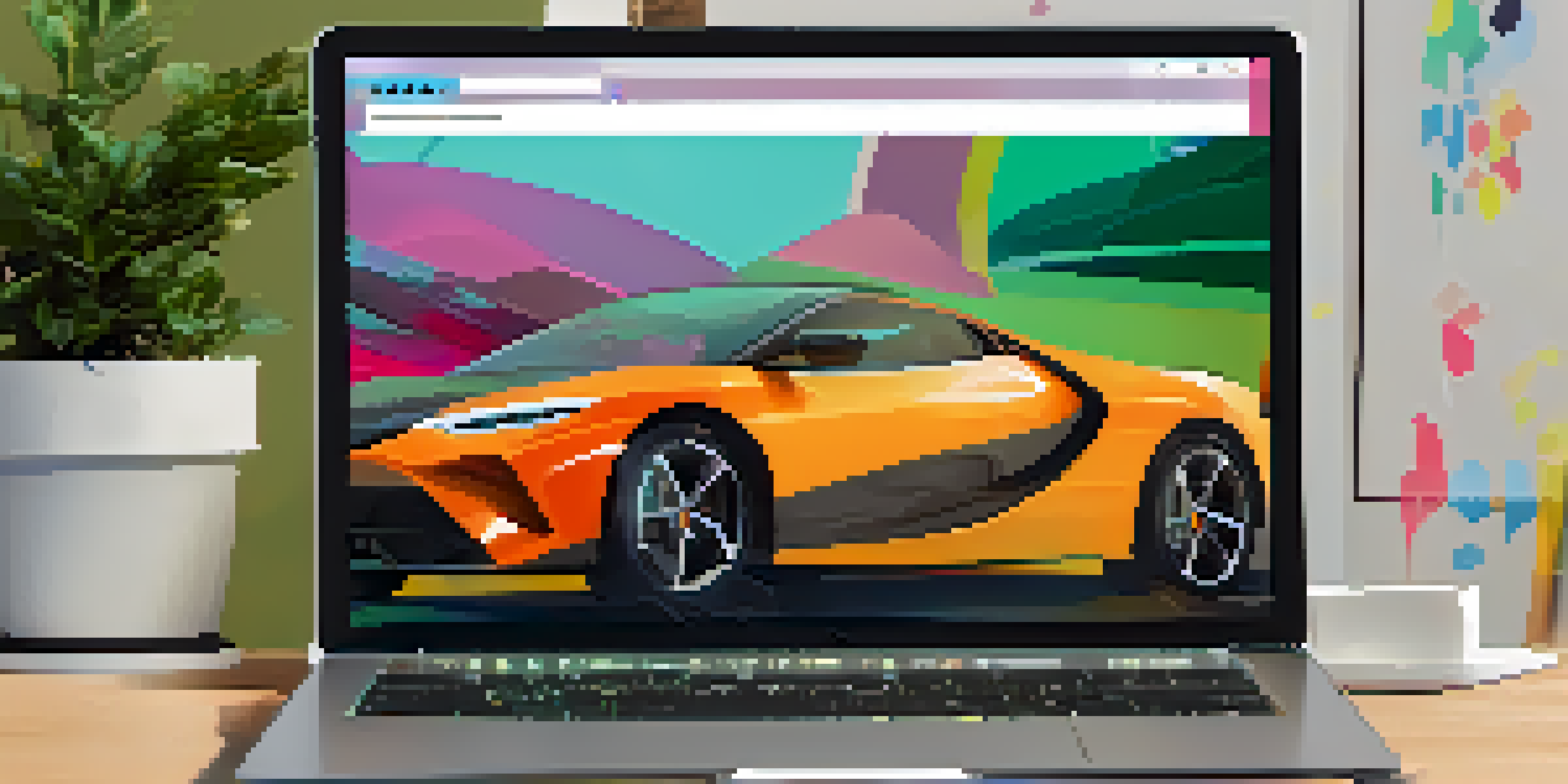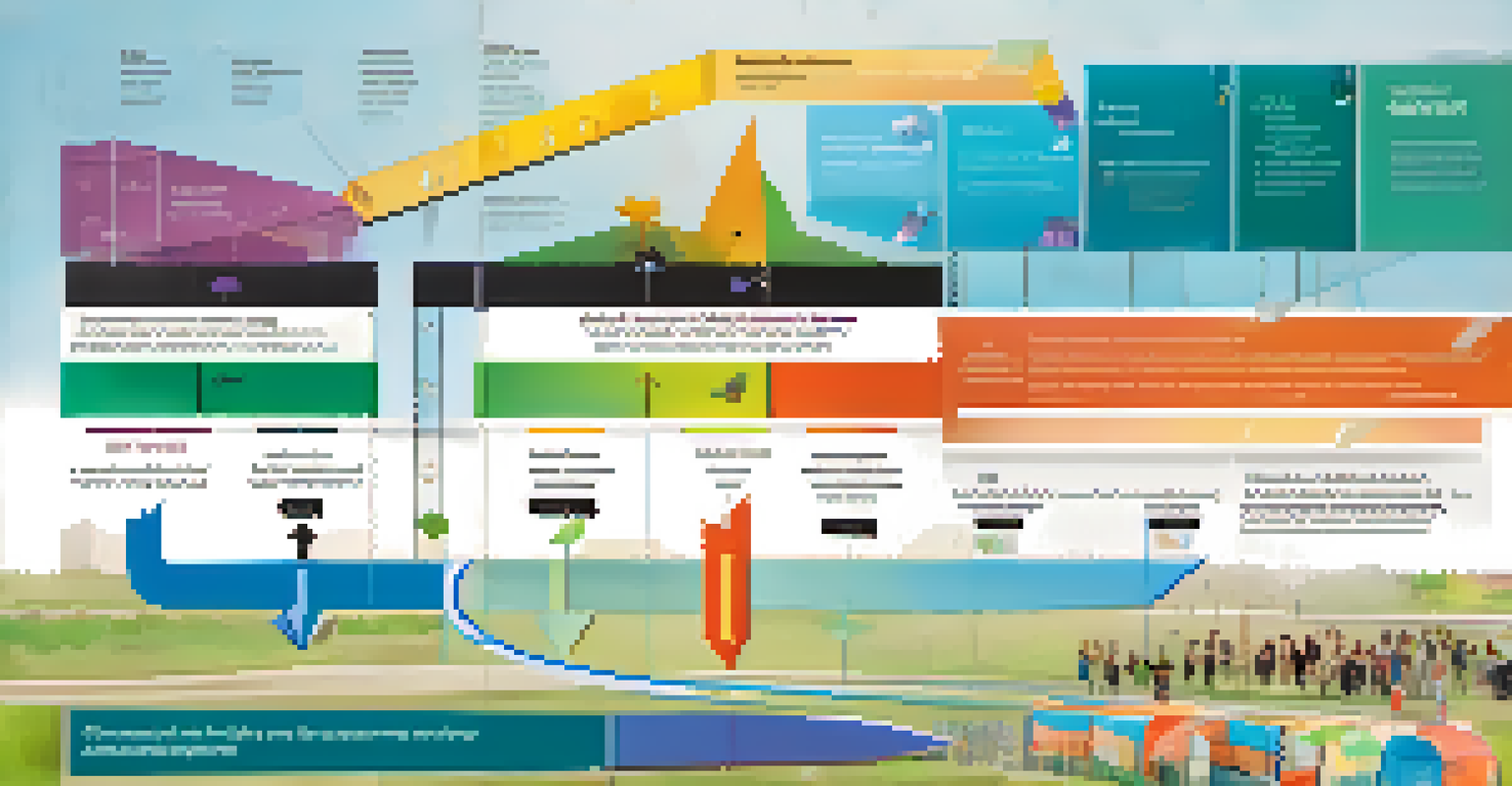Incorporating Multimedia in Student Digital Portfolios

Understanding Digital Portfolios and Their Importance
Digital portfolios are collections of a student’s work, showcasing their skills, growth, and achievements. They provide a platform for students to reflect on their learning journey, making it easier for educators to assess progress. In today's digital age, these portfolios are becoming essential for students as they prepare for future academic and career opportunities.
Digital portfolios are not just a collection of work; they are a reflection of a student's growth and a showcase of their unique journey.
Incorporating multimedia elements into a digital portfolio can elevate its impact. Instead of just presenting text-based work, students can include videos, images, audio clips, and interactive content that truly reflects their abilities and creativity. This multimedia approach not only engages the audience but also helps in conveying the student's message more effectively.
Moreover, multimedia can cater to various learning styles. For example, visual learners may benefit from infographics, while auditory learners might prefer podcasts. By embracing a variety of formats, students ensure their portfolios resonate with a broader audience, leaving a lasting impression.
Choosing the Right Multimedia Tools for Portfolios
There are countless multimedia tools available that can enhance digital portfolios, and choosing the right ones is crucial. Platforms like Canva for graphics, WeVideo for video editing, and SoundCloud for audio clips offer user-friendly interfaces suitable for students. These tools enable students to create polished and professional-looking content without needing advanced technical skills.

Additionally, many of these tools provide templates and resources to get started, making the creative process much smoother. Students can explore various methods to present their work, whether through slideshows, video presentations, or interactive websites. This flexibility allows for a more personalized touch to their portfolios.
Multimedia Enhances Engagement
Incorporating various multimedia elements like videos, images, and audio can create a more engaging and dynamic digital portfolio.
It’s essential for students to experiment with different tools to find what works best for their specific projects. By combining various multimedia elements, they can create a cohesive narrative that showcases their unique journey and skills. The right tools can make the difference between a standard portfolio and one that truly stands out.
Incorporating Visual Elements Effectively
Visual elements, such as images, infographics, and charts, play a significant role in enhancing digital portfolios. They can break up large blocks of text and provide visual context to the information being presented. For instance, a well-designed infographic can summarize a student’s achievements in a clear and engaging way.
The use of multimedia in education allows students to express their understanding and creativity in ways that traditional methods cannot.
When selecting visuals, it’s important for students to choose high-quality images that are relevant to their work. This helps maintain a professional appearance and keeps the viewer’s attention focused. Additionally, using visuals strategically can help highlight key points or themes in their portfolio, making it easier for the audience to grasp essential information.
Moreover, incorporating visuals can also stimulate creativity and encourage students to think outside the box. By presenting their work in diverse formats, students can express their personality and artistic flair, making their portfolios more memorable. This creativity not only showcases their skills but also reflects their unique approach to learning.
Utilizing Video for Dynamic Storytelling
Video is a powerful medium that can bring a digital portfolio to life. Whether it's a short introduction, a project presentation, or a reflection on learning experiences, video allows students to convey emotions and enthusiasm effectively. This dynamic format engages viewers and can create a personal connection that text alone may not achieve.
Creating videos has become more accessible than ever, thanks to various user-friendly editing tools. Students can easily record themselves presenting their work or compile clips of projects in action. This not only enriches the portfolio but also provides an opportunity for students to practice essential communication skills.
Accessibility Ensures Inclusivity
Ensuring that digital portfolios are accessible to all viewers promotes inclusivity and reflects a commitment to diverse needs.
Additionally, videos can highlight collaborative projects, giving insights into teamwork and problem-solving abilities. By showcasing their roles and contributions through video, students can provide a more comprehensive view of their capabilities. This adds depth to their portfolios, demonstrating not just what they did, but how they did it.
Adding Audio Elements for a Personal Touch
Audio elements, such as voiceovers, podcasts, or music, can significantly enhance the storytelling aspect of digital portfolios. A voiceover can provide context and insights into the work presented, guiding viewers through the portfolio in a more engaging manner. It’s an opportunity for students to express their thoughts and reflections, making the experience more personal.
Podcasts are another innovative way to showcase learning and expertise. Students can discuss their projects, share insights, or interview peers, adding a conversational element to their portfolios. This format not only showcases their communication skills but also allows them to explore topics in greater depth.
Music can also be used to set the tone for the portfolio. By carefully selecting background music that complements the content, students can create an immersive experience for viewers. This thoughtful integration of audio elements can leave a lasting impression, making the portfolio memorable and unique.
Ensuring Accessibility and Inclusivity in Portfolios
When incorporating multimedia into digital portfolios, it’s vital to consider accessibility for all viewers. This includes providing alternative text for images, captions for videos, and transcripts for audio content. By doing so, students ensure that their portfolios can be appreciated by individuals with different abilities and preferences.
Making digital content accessible not only promotes inclusivity but also reflects a student’s awareness and sensitivity to diverse needs. This can enhance their portfolios’ impact, as it shows a commitment to creating an equitable learning environment. Students can also include a variety of formats to cater to different learning styles, ensuring everyone can engage with their work.
Showcase Growth Through Reflection
Digital portfolios provide an opportunity for students to reflect on their learning journey and showcase their growth over time.
Furthermore, accessible portfolios can help students prepare for future professional environments, where inclusivity is increasingly important. By honing these skills early on, they can better advocate for themselves and others in their careers. This focus on accessibility adds another layer of professionalism to their work.
Showcasing Growth and Reflection Through Multimedia
One of the key benefits of digital portfolios is their ability to showcase growth over time. Students can use multimedia to document their learning journey, reflecting on past experiences and highlighting improvements. This reflective practice not only fosters self-awareness but also encourages a growth mindset.
Incorporating multimedia elements, like before-and-after comparisons, can visually demonstrate progress. For instance, a student might include a video of their initial presentation alongside a more polished version, illustrating how much they've developed. This kind of storytelling can be powerful, showcasing resilience and dedication.

Reflection is essential in the learning process, and multimedia can facilitate deeper insights. By engaging with their work through video, audio, and visuals, students can develop a richer understanding of their experiences. This not only enhances their portfolios but also prepares them for future challenges by instilling valuable skills and insights.